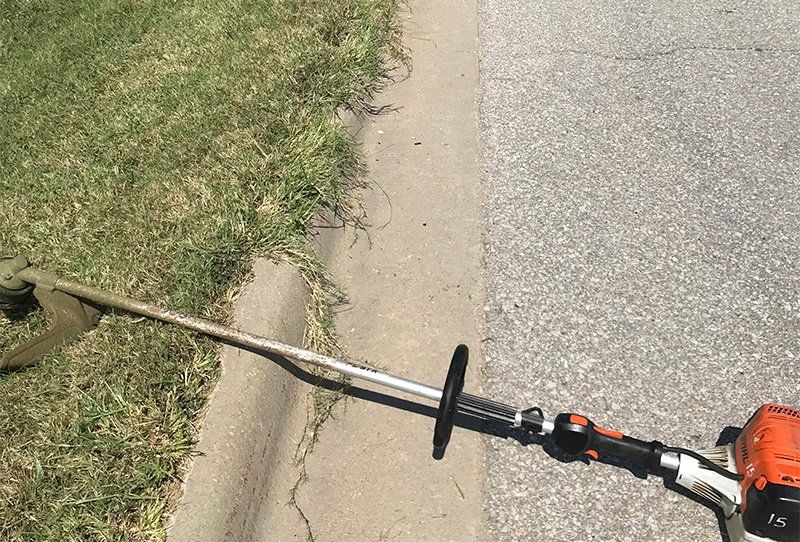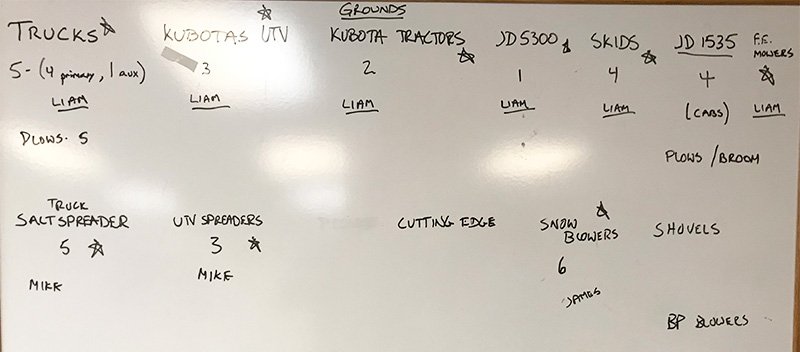Checking All the Boxes – The 3-P Approach
This past month I was fortunate to assume the Landscape Manager position at the University of Kansas in Lawrence, Kansas. I say I was fortunate because I really enjoyed my job at Mississippi State and wasn’t looking to change roles or location. The job at KU however would be a return to the Head Groundskeeper role and also a return to the Midwest. So I applied and after a visit, an interview, and a first candidate dropping out, I was informed I was getting the nod. In my mind this is the career role I had always hoped for. I wanted to have the top landscaping job at a prestigious university. Now I am a Jayhawk and in the middle of my 5th week can honestly say I am loving it. Of course, a large campus entails a lot of work. Completing that work, especially as a new employee, requires a system that helps me check all the boxes I need to.
Everything Comes Down to Personnel
Our teams are the foundations for our success or failure as managers. Unfortunately, we can sometimes take our staff for granted and forget like any living resource they need to be cultivated and given adequate resources. This is true at any point in the team’s life but especially when new management creates uncertainty and change. Successful teams are comprised of a system of moveable relationships, capabilities and responsibilities blending together as one. How well your staff pursues team goals is tied to how well you unify and foster their unique parts. Every day I strive to have at least small interactions with a portion of my staff. By the end of the week I want to have passed some time checking in with all my team members. Not all of these conversations have to be work related. Letting them know you see them as people as well as workers helps. Intentional interaction with your team is an opportunity to influence, troubleshoot, explore new ideas and also build trust.

Your crew is the foundation of your operation. Spending time with them daily helps build team spirit.

Production Drives the Operation
I love focusing on the psyche of my team. It is this component of my work that provides some of my deepest satisfaction. However, production is where the tire meets the road for our teams. I believe production must be thought of in terms of quantity obviously but also quality as well. Top tier organizations blend these two distinct production objectives into one result. As Managers we provide the structure guiding our team’s work. We do this by creating policy that eliminates confusion plus provides a destination to our work. We also use training coupled with standards to provide a needed roadmap and timeline for getting to our destination. We reinforce these efforts via inspection and feedback so our teams understand how to best meet the expectations. I suggest that production shouldn’t only be a static metric but should also be a mindset. In my experience meeting production has been used to push workers rather than foster efforts to meet better standards. One powerful way for the manager to influence production is to occasionally work side by side with the team. This further enhances the bond of the team and can go a long way toward creating the drive for production that is essential for your operation.

Define, and Refine the Process
In my career I have yet to see an accomplished workforce that isn’t guided by well-crafted processes. All of our work is constrained and ordered by the processes our teams and organizations establish, then administer. In addition to our primary work of landscaping, turf care and more, there is procedural work that supports it. The auxiliary work of purchasing, payroll, reviews and research may seem like a time suck but it is essential. For my organization paperwork is the background evidence that helps explain to my administration work we actually do. As a new manager auxiliary work will provide another way to learn your team and operation. It also helps you analyze the information you need to make beneficial decisions and craft the policy to guide your team’s efforts. Procedural work may also help you establish connections with other parts of your organization facilitating your work. Grounds doesn’t exist on an island and we all will need help from allies along the way.

A Three Legged Stool
Likely you know the adage of a three legged stool. Take away any one leg and the stool doesn’t stand. This is true for managing a successful team. Take away any of the essential components of our work and our operations and teams can quickly deteriorate. For me, scheduling these 3 basic segments of time into each day allow me to maintain progress on all three. There is fluctuation to my scheduling based on external pressures from bosses, weather, staffing, etc., but I try not to let my work get in the way of my work. Both are essential. The flipside of this tenet is that if I shortchange one aspect, I shortchange them all. This is the synergy of the 3-P approach. I give myself some forgiveness in what is defined as Personnel, Production and Process’ but by performing some of each every day, I maintain Positive Personal Progress.

So excited to be taking my next career step at the University of Kansas. Always did like blue. #RockChalkJayhawk



0 Comments
Recommended Comments
There are no comments to display.